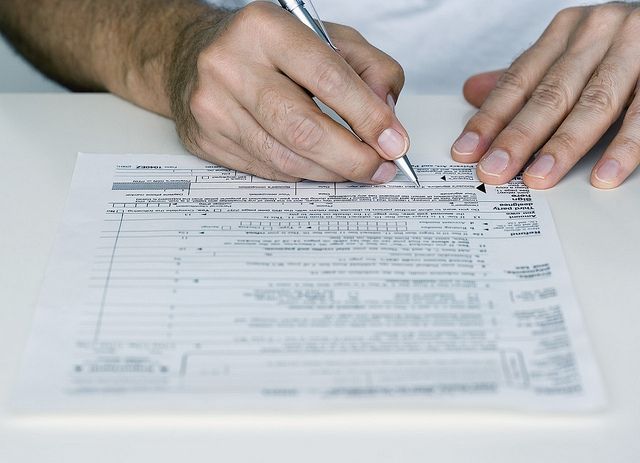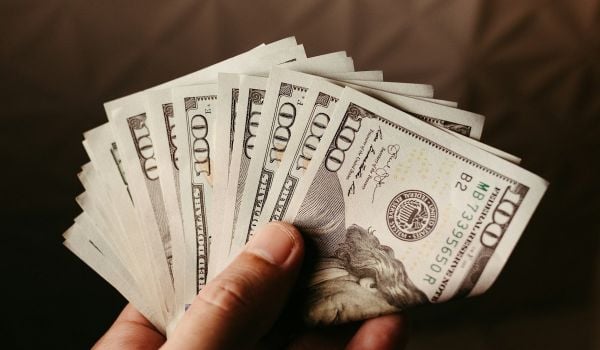Fattest. Ugliest. Worst Dressed. Philadelphia has suffered the slings and arrows that come with the top slot of many an unscientific “worst of” list. Today, for once, the city can proudly claim good standing in a poll of 237 regional municipalities for an unlikely reason: a lower tax rate.
The Pew Charitable Trusts’ Philadelphia Research Initiative (PRI) released the results of a new study that showed a major shift in the average amount of taxes paid by residents of the Delaware Valley. The study found that many suburban rates have increased, while city rates have fallen. Philadelphia was ranked as the 48th highest taxing municipality in the poll — a major shift from a near identical study conducted in 2000, which ranked Philadelphia third.
Importantly, the study did not survey the actual amount of taxes paid by area residents, but rather calculated what a hypothetical family would pay in state and local taxes in each municipality based on their respective tax rates. This hypothetical family of four was assumed to have a combined household income of $60,000 and a home valued at $186,000, both figures drawn from regional medians, as well as 30 percent of their income garnished by sales tax.
This hypothetical household would spend 12.9 percent of its annual income on state and local taxes in Philadelphia, down from 13.5 percent in 2000. The same family living in a suburb on the Pennsylvania side of the Delaware would pay an average of 12.2 percent, up from 9.8 percent in 2000. New Jersey residents would pay an average of 11.3 percent, up from 9.9 percent. Darby, Penn. came out “on top” as the highest taxed municipality in the study, at 21.6 percent.
The study also examined at the impact of commuting on residents’ tax burden. Philadelphia levies a commuter tax, known locally as the “wage tax”, of 3.4985 percent on suburban residents working in the city and 3.928 percent on actual city residents. In 2000, in spite of the wage tax, both Pennsylvania and New Jersey suburban commuters would have paid significantly less than the average city resident in state and local taxes. In 2000, a hypothetical Philadelphia family would have born a 0.3 percent tax disadvantage over the average suburban commuter, a figure that has transformed, in 2012, into a 2.1 percent advantage. Although transportation costs were not factored into the study, Pennsylvania’s suburban residents who worked in the city are now the biggest losers overall, paying an average of 15 percent of their income into tax schemes, while New Jersey commuters now pay 13.3 percent.
But while city taxpayers may be happy about their lower rates, Tom Ginsberg, a project manager at Pew, said in a press conference that the greatest factor in the “narrowing gap” of city versus suburban tax costs had to do with rising property values — and Philadelphia’s failure to translate those increases into tax revenue. “From 2000 to 2012, home values rose faster than incomes, causing effective property tax rates to go up. Property assessments, in the suburbs, were closer to fair market values than in Philadelphia,” said Ginsberg, adding, “There is a well documented phenomenon in Philadelphia of under-assessment, and the effect here is very clear on the city and suburban tax gap.”
Additionally, property tax rates also rose in many PA suburbs over the last decade. Sprawling development, which has stretched across the Delaware Valley over the last 60 years, has left a constellation of tiny, centuries-old boroughs and townships in the area struggling to keep up with ballooning infrastructure costs. This, along with the combination of the recession and, sometimes, an increase in traditionally “urban” problems, like rising crime and poverty, have forced many local governments to cope with these challenges by raising property taxes — and introducing wage taxes of their own. In the 1960s, no suburban municipalities had wage taxes. Now the vast majority do, and have increased these taxes while Philadelphia has slowly lowered its own commuter tax, frequently identified as a job-killer by economists.
Ginsberg noted that the study had not considered the possible impact of the Actual Value Initiative (AVI), an effort to update property assessments. While billed by advocates as a move to simply introduce a fairer assessment system, the AVI could impact Philadelphia’s relatively low taxation rate. In recently gentrified neighborhoods that have not seen decades-old assessments updated to match increased property values, the AVI could radically rewrite home buyers’ real estate math.
While the Pew report provides information about tax rates, it doesn’t correlate them to personal decisions about where to live, work or own property. Could Philadelphia’s relatively low tax rates be part of the reason the city has grown exponentially in the past five years? And will the AVI end that trend? That remains to be seen.
_200_200_80_c1.jpg)
Ryan Briggs is an investigative reporter based in Philadelphia. He has contributed to the Philadelphia Inquirer, WHYY, the Philadelphia City Paper, Philadelphia Magazine and Hidden City.
















